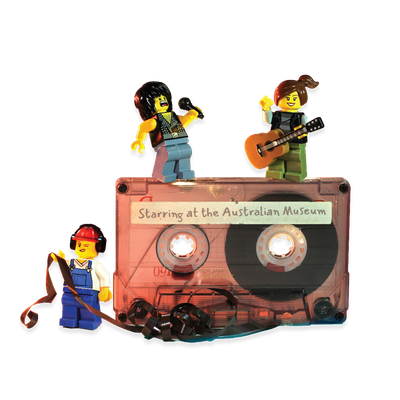Your search returned 2817 results
By Page Type
By Tag
- fish (966)
- blog (696)
- fishes of sydney harbour (401)
- First Nations (299)
- Blog (236)
- AMRI (169)
- archives (164)
- Eureka Prizes (146)
- Aboriginal and Torres Strait Islander (135)
- insect (126)
- Ichthyology (124)
- geoscience (109)
- minerals (102)
- climate change (99)
- podcast (94)
- Fish (91)
- Anthropology (89)
- International collections (80)
- Minerals Gallery (78)
- wildlife of sydney (78)
- Labridae (77)
- frog (74)
- gemstone (70)
- photography (66)
- history (64)
- Mollusca (60)
- gem (59)
- staff (59)
- Birds (56)
- Gems (56)
- Indonesia (56)
- education (56)
- shark (55)
- AMplify (54)
- people (53)
- earth sciences (50)
- exhibition (50)
- past exhibitions (50)
- Gobiidae (48)
- sustainability (46)
- Pomacentridae (45)
- Serranidae (44)
- lifelong learning (42)
- science (42)
- Earth and Environmental Science (41)
- Syngnathidae (41)
- Ancient Egypt (40)
- Bali (40)
- bird (40)
- dangerous australians (40)
-
Water and sedimentary transport
https://australian.museum/learn/minerals/shaping-earth/water-and-sedimentary-processes/Water plays a vital role in most sedimentary processes. Pure water itself has little effect on rocks. It is the dissolved gases in water, particularly carbon dioxide, that cause the chemical decay of minerals and mineral dissolution.
-
Clams, mussels, pipis and oysters - Class Bivalvia
https://australian.museum/learn/animals/molluscs/clams-mussels-pipis-and-oysters-class-bivalvia/Bivalves are molluscs, well-known to humans who have developed a taste for many of them. This group includes oysters, mussels, pipis, cockles, scallops and clams.
-
What is a spider?
https://australian.museum/learn/species-identification/ask-an-expert/what-is-a-spiders/Spiders and their relatives are called arachnids. Scientist have grouped them together into a class called Arachnida. Arachnology is the study of this group of animals
-
How long do spiders live?
https://australian.museum/learn/species-identification/ask-an-expert/spider-lifespan/Some spiders have life spans of less than a year, while others may live for up to twenty years. However, spiders face many dangers that reduce their chances of reaching a ripe old age.
-
What is natural selection?
https://australian.museum/learn/species-identification/ask-an-expert/what-is-natural-selection/Darwin's grand idea of evolution by natural selection is relatively simple but often misunderstood.
-
What is a habitat?
https://australian.museum/learn/species-identification/ask-an-expert/what-is-a-habitat/Explore seven different animal and plant habitats of Australia: Coasts, Freshwater, Antarctica, Forests, Woodlands, Arid Zone and Urban.
-
What is a herbivore?
https://australian.museum/learn/species-identification/ask-an-expert/what-is-a-herbivore/A herbivore is an animal that gets its energy from eating plants, and only plants.
-
What is fauna?
https://australian.museum/learn/species-identification/ask-an-expert/what-is-fauna/Fauna is all of the animal life present in a particular region or time.
-
Discover more
2025 Australian Geographic Nature Photographer of the Year
Special exhibition
Free entry
Now open -
Discover more
Unfinished Business
Special exhibition
Free entry
Now open -
Discover more
Wansolmoana
Permanent exhibition
Free entry
Open daily -
Find out more
Burra
Permanent kids learning space
Free entry
10am - 4.30pm![]()
-
Discover more
Minerals
Permanent exhibition
Free entry
Open daily![]()




